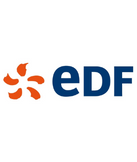The Gandhi Project: offsetting our carbon emissions

Human activities have significantly increased the concentration of greenhouse gasses in Earth’s atmosphere, leading to what is today known as global warming. To act on climate change, we should all strive to reduce our carbon footprint. This can be done very simply every day by reducing the amount of energy we use, eating fewer animal products, shopping locally, traveling smart, and reducing our waste.
However, not all emissions can be eliminated. For those unavoidable emissions, there are carbon offsetting programmes around the world which can help bring our collective environmental impact down. Between 2019 and 2021, Selectra acquired and canceled more than 200,000 carbon credits issued by the Gandhi Project in India. This project consisted of developing wind power farms in India, where 56% of the current energy demand is covered by coal consumption..
Each year, Selectra buys carbon credits from its offsetting partners and asks them to cancel the number of credits to be offset on behalf of its customers. In exchange, Selectra receives an offset certificate from its partners, which is sent to each customer by email.
Concerned about your carbon footprint?Selectra can help you offset your carbon emissions as part of our partnership with EcoAct and ACT Commodities. To learn more, give us a free call on 020 3936 0059.
The Gandhi Project: what is it?

The Gandhi Project is a sustainable wind farm programme based all over India, including Mahatma Gandhi’s birthplace of Porbandar. As a developing nation, around 56% of India’s electricity still comes from coal and other fossil fuels. Although these energy sources are cheap, this has a serious impact on the environment.
The fuel mix in the UK energy sector is currently made up of 33% renewables and just 5% coal, something that is currently unthinkable in a developing nation like India. Run by Selectra’s partner EcoAct and certified under the Verified Carbon Standard (VCS), the Gandhi Project aims to contribute to India’s path to clean energy.
The Gandhi project in numbers:
During the two years that Selectra supported the Gandhi Project, 21 wind turbines were set up and almost 36 GWh of green electricity is being produced every year, canceling out more than 33,000 tons of equivalent CO2 emissions. The project was VCS (Verified Carbon Standard) certified. and in addition, this project has had several direct positive impacts on local communities:
- 80 schools were created and supported thanks to a grants system, which notably contributed to increasing school enrolment by 50% in Tidi, which is situated in the Udaipur District, in Rajasthan.
- +800 people benefited from food aid.
- A more stable and accessible electricity network was set up.
The positive impacts of the Gandhi project
The Gandhi Project is a programme that has positive effects on both the environment and local living conditions. Although its main focus is on renewable energy, it has also had a positive social impact through creating jobs at the various wind power plants across India and financing scholarships and food aid.
What is carbon offsetting?
First coined following the Kyoto Protocol in 1997, carbon offsetting is the act of compensating for our greenhouse gas emissions by helping to fund projects that decrease emissions elsewhere, for example, renewable energy programmes or reforestation projects.
Of course, carbon offsetting is just one of many actions we can take to help us effectively tackle climate change. Making adjustments to our daily habits is just as important too, be that eating less meat, travelling by public transport or only flying when necessary.
To reach our goals on a global scale, carbon offsetting programmes often also include projects to counter deforestation, as well as financing renewable technologies and helping to lift people out of poverty by providing jobs and clean water.
What does carbon neutral mean?
The UK has committed to becoming carbon neutral by 2050, but what does this actually mean? Growing plants such as trees to produce energy or raw materials takes CO2 out of the atmosphere, whereas burning them releases it again. To become carbon neutral, or ‘net-zero’, the amount of CO2 taken out and released again must be identical.
Why should I offset my carbon emissions?
The changing climate is going to have an unavoidable impact on our future. Over the past century, we’ve seen increases in global temperatures at an unprecedented rate, which has led to a rising of sea waters and a reduction in fauna and flora numbers.
States have made an effort to limit the impact of climate change by committing firstly to the creation of carbon credits to reduce greenhouse gas emissions in 1997 as part of the Kyoto Protocol and more recently in the Paris Agreement of 2015, which is a universal and legally binding climate deal to try and keep the increase in global temperatures below 2°C.
Scientists believe climate change is largely down to the release of greenhouse gases into the atmosphere. As the world became more industrialised, greenhouse gases were emitted in excessive quantities.
What’s a greenhouse gas?Greenhouse gases are invisible and odourless gases which nevertheless have very serious consequences for the environment. These gases trap heat, which remains in the atmosphere, increasing the surface temperature.

